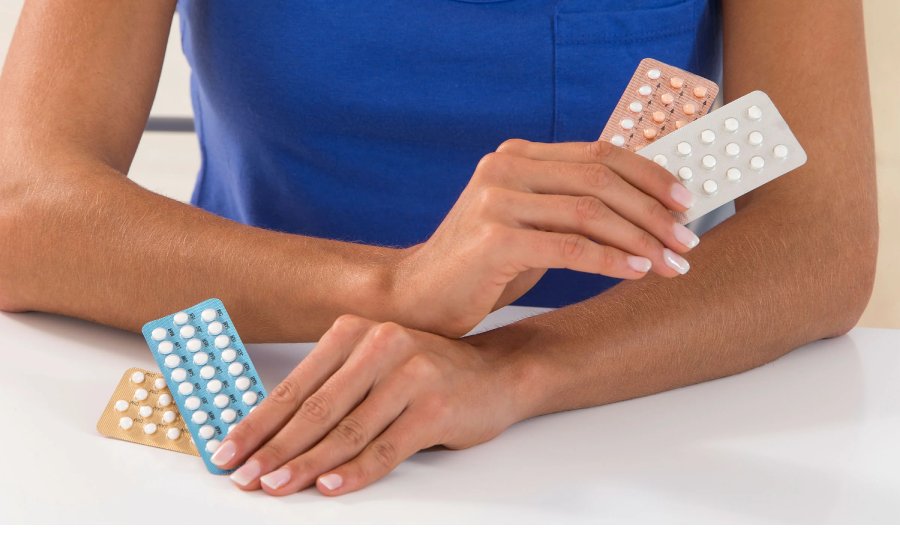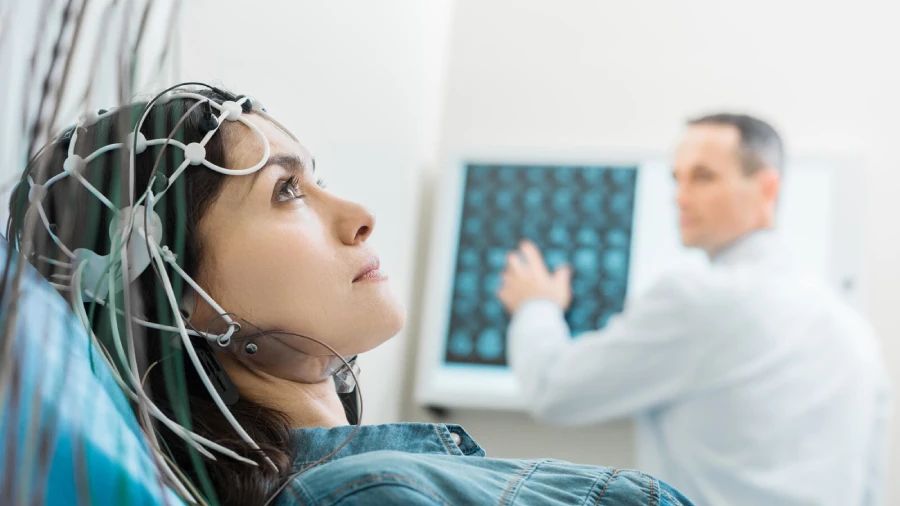Complete EXAMINATION AND DIAGNOSIS
When considering each clinical case, doctors pay attention to the characteristic clinical picture of Parkinson’s disease, and also prescribe an additional examination:
Magnetic resonance imaging
Electroencephalography
Duplex scanning of brain vessels
Computed tomography
Angiography
Extended laboratory examination of blood (biochemical, hormonal analysis, electrolytes and other checks).
Dat Scanning PET CT.
After examination, observation and consultations with the faculty, a balanced medical treatment plan is developed and prescribed, or, as needed, other types of intervention, in particular surgical.

Drug therapy – various groups of drugs are used, the purpose of which is to increase the amount of dopamine and functioning dopamine receptors:
- Dopaminergic drugs (levodopa, carbidopa)
- Dopamine agonists (bromocriptine, pergolide, lizuride)
- Monoamine oxidase inhibitors (selegiline, tolkapone)
Central holinoblockers (cyclodol, biperiden, dinesin) - Inhibitors of reverse neuronal dopamine uptake (gludantan).
A new drug treatment – the AZILECT drug developed by Israeli specialists and pharmacists-“AZILECT” is the first and only one in the world that allows both to slow down the course and progression of the disease and to stop the worsening of the symptoms of the disease.
Treatment of Parkinson’s Disease always takes place in a complex way – that is, when using medications, physiotherapy treatment is recommended as auxiliary measures, and in most cases, the help of a specialist psychologist is very effective. In cases where Parkinson’s disease is at an advanced stage, specialists always pay attention not only to the treatment of this disease itself, but also to the complications, physical and psychological, that it caused.
Video: “Rehabilitation of the patients with Parkinson’s Disease”
Set of exercises 1 for Parkinson’s Disease: improving joint mobility and increasing body flexibility
For additional information about Rehabilitation of the patients with Parkinson’s Disease you can watch a video demonstrating exercises and rehabilitation recommendations.
Surgical treatment has two main directions: destruction of certain areas of the brain or their deep stimulation
- Neurostimulation is the latest minimally invasive technique for the treatment of Parkinson’s disease. The essence of the method is that special electrodes are inserted into the area of the subthalamic nucleus of the brain, which conduct low-amplitude electrical discharges produced by a neurostimulator that still remains outside. A test stimulation is carried out for several weeks, during which the effectiveness of the method is evaluated, the patient’s condition and his feelings are monitored. With a pronounced therapeutic effect, the next stage of neurosurgical surgery is performed, when a neurostimulator is implanted under the skin in the chest area. After that, the patient can use a special regulator to control the operation of the neurostimulator, depending on their own needs and well-being. This method of treating Parkinson’s disease is well tolerated by patients, is safe and effective.
- Pallidotomy – during surgery, the destruction of the pale globe, one of the structures of the strio-pallidar system, is carried out.
- Thalamotomy – consists in the destruction of the ventral intermediate nucleus of the thalamus, which leads to a significant decrease in the severity of tremor in patients with Parkinsonism.
Stereotactic radiosurgery is based on the use of high–power radiation, which is concentrated into a single beam, with which the destruction of sections of the strio-pallidar system can be carried out. The treatment is carried out with the use of modern radiotherapy devices, such as a Gamma knife, a cyber knife, a proton accelerator. - Transcranial magnetic stimulation is a method based on the creation of a magnetic field using a special device that passes through the bone tissue and causes the appearance of impulses in the nerve cells of the brain.

More about Neurostimulation in Parkinson’s disease– DBS (Deep brain stimulation)
Successful treatment of parkinson’s is possible with the help of deep brain stimulation. This method helps to suppress the activity of areas of the brain that are responsible for the symptoms of Parkinson’s disease. During treatment, special electrodes are inserted into a part of the brain called the “pale ball” and attached to a device, like a pacemaker, which is implanted under the skin in the area of the collarbones. Activated equipment sends continuous electrical impulses to the brain, which blocks the impulses that cause tremors.
The pulse generator is programmed using a computer and remains operational in the patient’s body for three to five years.
Most patients need electrodes inserted into both hemispheres of the brain. To detect the target area, the results of magnetic resonance or computed tomography are used, or the technique of recording electrical potentials from brain regions is used to create a map of electrical activity.
The benefits of neurostimulation are very significant. This procedure does not require the destruction of a part of the patient’s brain, which significantly reduces the risk of complications, such as with thalamotomy or pallidotomy.
Electrical stimulation is regulated if necessary, and its parameters can be changed. Neurostimulation does not require additional operations. The stimulator can be turned off at any time if it causes side effects.
Statistics show that the treatment of Parkinson’s by neurostimulation significantly relieved the symptoms of the disease in 70% of patients. Patients manage to significantly reduce the dose of medications used and stop at the average use of medicines.
The newest, Revolutionary type of treatment for patients with Parkinson’s disease – NON-INVASIVE METHOD— MRgFUS
The new technology is based on a combination of the use of real-time MRI technology and high-frequency ultrasound beams that come out simultaneously from hundreds of points located on a special helmet. The rays, penetrating into the brain and concentrating at one point, cause inhibition and damage to brain cells in the area of the strio-pallidar system responsible for dyskinesia and the ventral intermediate nucleus of the thalamus, responsible for tremor and motor functions. Thus, under the constant supervision of MRI, the same effect is achieved as with surgical intervention, only without a scalpel and incisions.
This is usually a one-time procedure performed within 1.5-2 hours. About 140 such successful procedures have already been carried out in the world.

ISRAELI SCIENTISTS HAVE DEVELOPED A TECHNOLOGY THAT RELIEVES PATIENTS WITH PARKINSON’S DISEASE FROM TREMORS
Publication дате: November 25, 2013, 10:30 last updated: November 25, 2013, 11:44
The development of the Israeli company InSightec without invasive and dangerous operations will save people suffering from Parkinson’s disease from tremors, according to the newspaper “Maariv”.
For the first time, a small operation was performed at the medical center without general anesthesia and incisions, relieving the tremor of a patient suffering from Parkinson’s disease.
The procedure was carried out using technology developed by the Israeli company InSightec. This technology turns ultrasonic radiation into an accurate tool that replaces a scalpel.
The patient is placed in an MRI machine in a special helmet developed by InSightec, which makes it possible to act on the patient’s brain with ultrasound radiation. The procedure is performed without anesthesia, incisions and the risk and risk of infection.
The introduction of this treatment became possible thanks to the cooperation of InSightec with the medical center .
Last week, the first such operation was performed on a patient with Parkinson’s disease who experienced severe tremor of the right side of the body.
73-year-old Sami Zangi, who has been suffering from tremor for 15 years, was “born again” two hours after the start of the procedure, according to the patient.

Unconventional methods of treatment
Gyro-kinetic therapy
A new method of treating Parkinson’s disease is offered by Israeli alternative medicine. We are talking about a kind of dance therapy – dance movements specially developed specifically for people suffering from this disease. In the last stages of Parkinson’s disease, this dance therapy, or, as it is called, gyro-kinetic therapy, is unlikely to help, but it can bring tangible benefits if you start using it at the beginning of the disease.
The creator of the new technique is Alex Kerten, an Israeli medic who is also an expert in the field of martial arts. This method combines both specially selected music and certain movements that can really help the affected human nervous system. Gyro-kinetic therapy has already won the interest of doctors and people suffering from Parkinson’s disease, not only in Israel.
Through gyro-kinetic therapy, a patient with Parkinsonism can slow down the progression of the disease, and is able to do without any medications for longer, which are now practically the only method of treating Parkinson’s disease, and can cause various unpleasant side effects.
Treatment of Parkinson’s disease in Israel – stem cells
Currently, the development of methods for the treatment of Parkinson’s disease in Israel using stem cells is underway. Unfortunately, to date, the effectiveness and safety of this method of treating Parkinson’s disease in Israel is quite a controversial issue, since some side effects have been noticed (for example, dyskinesia – severe involuntary movements), but research continues.
Scientific work is also being carried out on the study of genes encoding proteins that produce dopamine.

Check out the demo version of our sets of exercises for Parkinson’s Disease on YouTube
Our website presents the following sets of exercises for the rehabilitation of the patients with Parkinson’s Disease:
-
SET OF EXERCISES №1 FOR PARKINSON’S DISEASE: IMPROVING JOINT MOBILITY AND INCREASING BODY FLEXIBILITY
-
SET OF EXERCISES №2 FOR PARKINSON’S DISEASE: STRENGTHENING OF THE MUSCULOSKELETAL AND MUSCULAR SYSTEM, ENDURANCE
-
A SET OF EXERCISES №3 FOR PARKINSON’S DISEASE: IMPROVING THE COORDINATION AND “COMPOSITION” OF MOVEMENT – DIVIDING IT INTO COMPONENTS
-
A SET OF EXERCISES №3 FOR PARKINSON’S DISEASE: IMPROVING THE COORDINATION AND “COMPOSITION” OF MOVEMENT – DIVIDING IT INTO COMPONENTS



